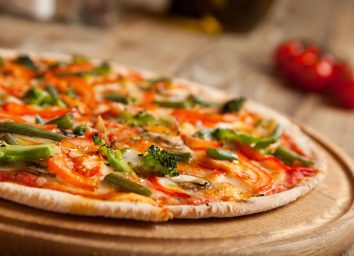How to Make the Healthiest Pizza Dough on the Planet
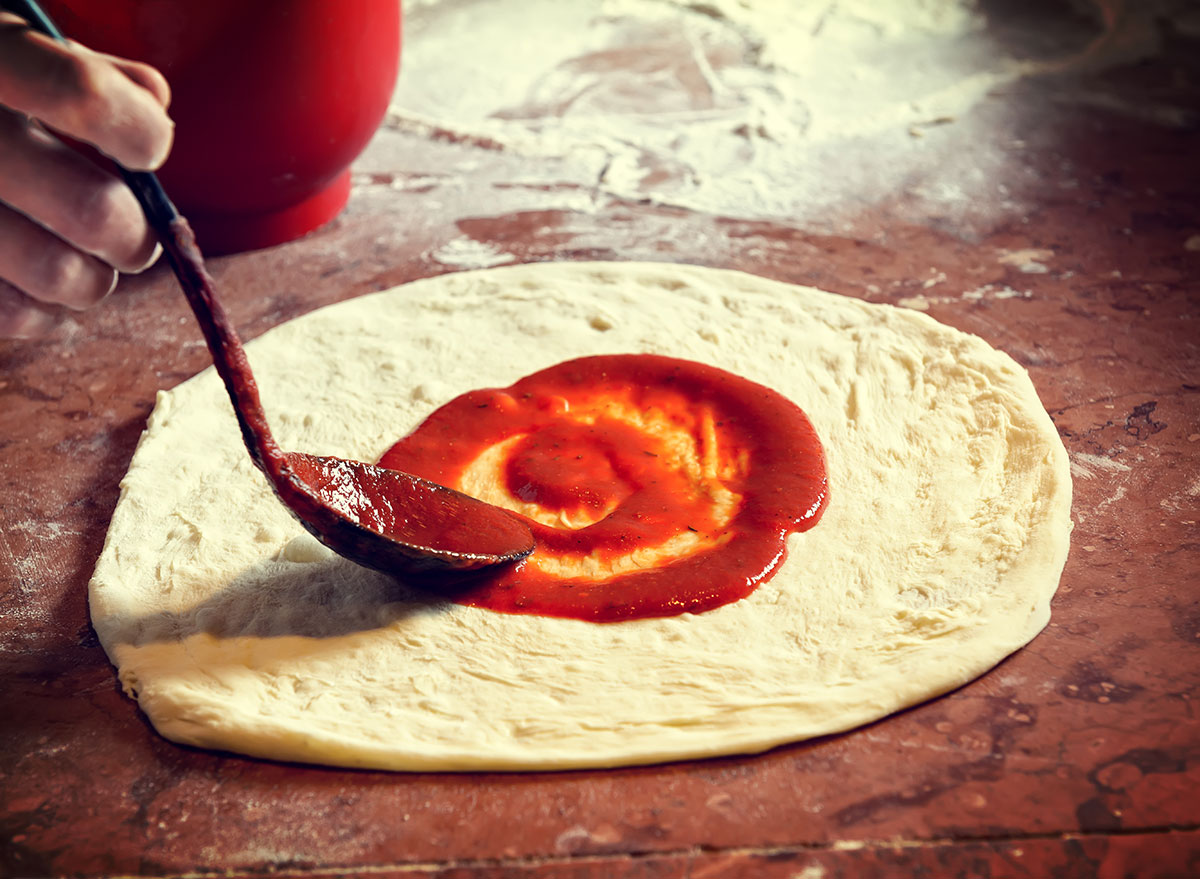
When I tell other chefs how I make my pizza, the reaction I usually get is, “You’re crazy!” And this in New York City, a town where chorizo ice cream is on the menu. It’s true, my method takes a lot more time and costs a bit more, but I think it’s worth it. The secret is the dough.
I make it the way it was made many years ago in Italy before the technique was abandoned in favor of cheaper, less labor-intensive ways. These days, people roll out of bed, go to 3 weeks of pizza training, and think they’re a pizza baker. But it’s not just the recipe. You have to understand the chemistry of baking.
I have a lot of passion for my job, and because I’m curious, I like to discover new techniques. It took me nearly three years to come up with my recipe for healthier pizza dough. It started when I met a man who worked at a famous Italian flour company in Italy. He told me there’s another way to make pizza. In short, use a better quality of flour, and you’ll get a better result.
So I started experimenting.
It was 2013. In Italy, flour is classified into four main types—2, 1, 0, and 00—according to the way it’s produced and how finely it’s milled. Type 2 is the coarsest, and type 00 the finest.
You may have heard of type 00 flour. It’s the Italian type commonly used for fresh pasta and pizza dough, and chances are, you will find a bag in every corner grocery store and pizzeria. It’s as common as red-checked tablecloths.
But it’s also the most highly refined variety of flour and not necessarily the most nutritious. The milling process strips it of nearly all of its bran, as well as its vitamins and minerals. It’s very similar to American white flour, which is so nutritionally deficient, the government requires it to be enriched with iron, vitamin B, and other things that were lost during the harsh refining process.
For many years, I used 00 flour because everyone else did. But then I started to learn more about nutrition, and I made a change that makes my pizza far more nourishing and something you can build a healthy diet around.
For the pizza at my restaurant Ribalta in New York City, I use type 1 stone-milled flour from an Italian maker called Le 5 Stagioni. Stone-ground flour, which is literally made by pulverizing the grain between two heavy stones, is more expensive to produce, and that’s one reason why many restaurants don’t use it. One 50-pound bag of 00 flour imported from Italy will run $27. A bag of the stone-ground will cost me $37.
The flour you’ll be using is better for your body, but the biggest difference between my pizza—the pizza you will be eating on this diet—and regular pizza is the raising time. Keep in mind that dough needs to be fermented for a long time in order for the yeast to go to work and the gluten to be adequately broken down.
I allow my dough to rise for at least 36 hours. That’s a full day and a half. Generally, other pizzerias might let their dough rise for no more than 5 hours. It ends up heavy, like a rock in your stomach. No wonder you fall into a food coma after you eat a slice. My process costs a bit more. From a business perspective, it doesn’t make the most sense, but my customers tell me over and over again that they can taste the difference. My pizza is lighter; it melts in your mouth. Customers claim that they could eat two of them at one sitting.
Your average corner pizza place doesn’t do it my way because it takes training to learn to make pizza this special way, and getting your staff up to speed is expensive.
Fermenting your dough also requires space—lots of it. At Ribalta, I make dough three times a day and store up to 600 balls in a large walk-in refrigerator, where they can slowly ferment at 42°F. Regular pizzerias are about volume and turnover. They’re looking to sell a slice quickly and cheaply, sometimes for as low as 99 cents. They often don’t have the time or the space to store large amounts of dough and let it rise. They frequently don’t have the knowledge either, having been taught the quick and dirty way to make their product.
When you make the dough according to my recipe, there are some advantages, too. Uncover them, along with my dough recipe, below. And for more, check out Chef Pasquale Cozzolino’s The Pizza Diet.
More vitamins and minerals.
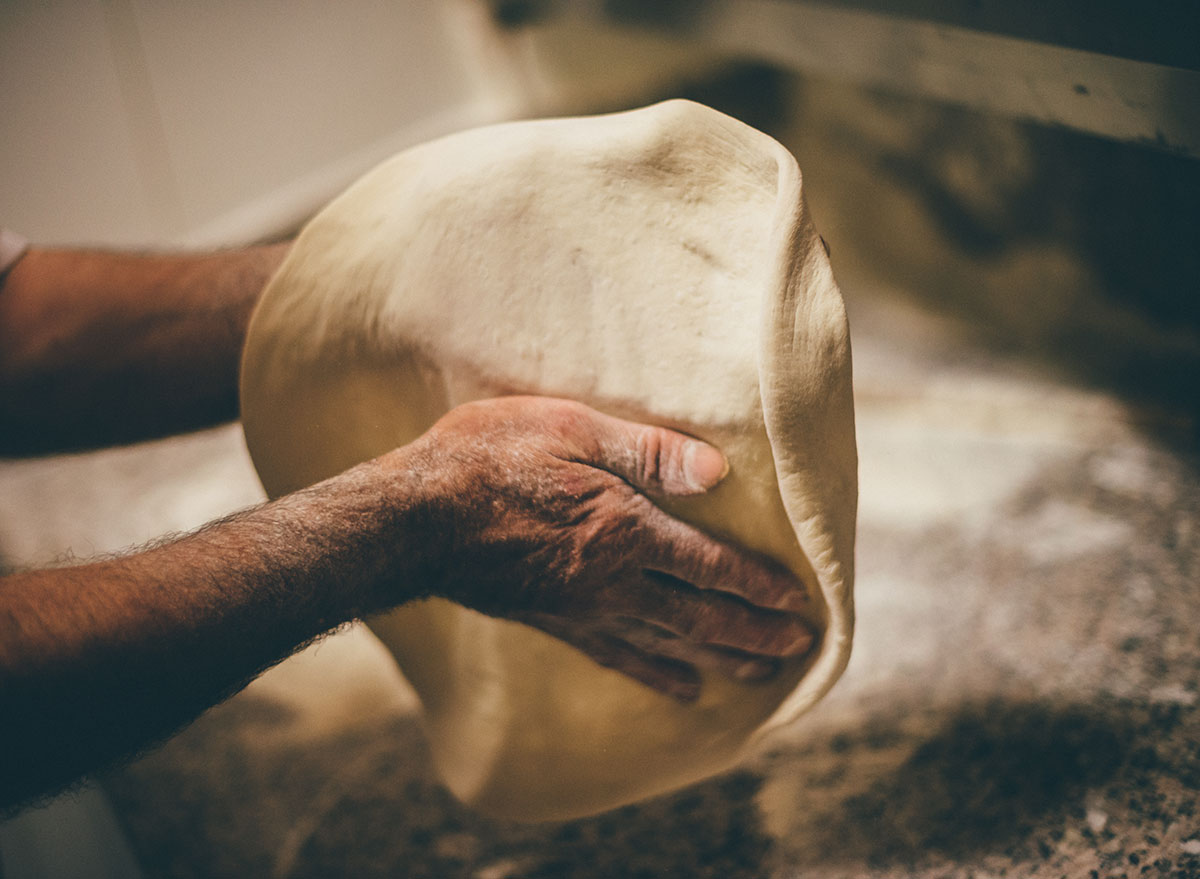
Despite its wholesome reputation, white flour is one of the most nutritionally deficient substances you can put into your body. Everything that was once healthy in the wheat kernel gets stripped away in the lengthy refining and bleaching process. It has virtually no fiber, and more than 100 vitamins are also removed. By using a better type of flour, you give your body more of the fiber and vitamins that are lost with white or 00 flour. Studies have shown that we absorb vitamins and minerals better from fermented bread than nonfermented.
Easier to digest.
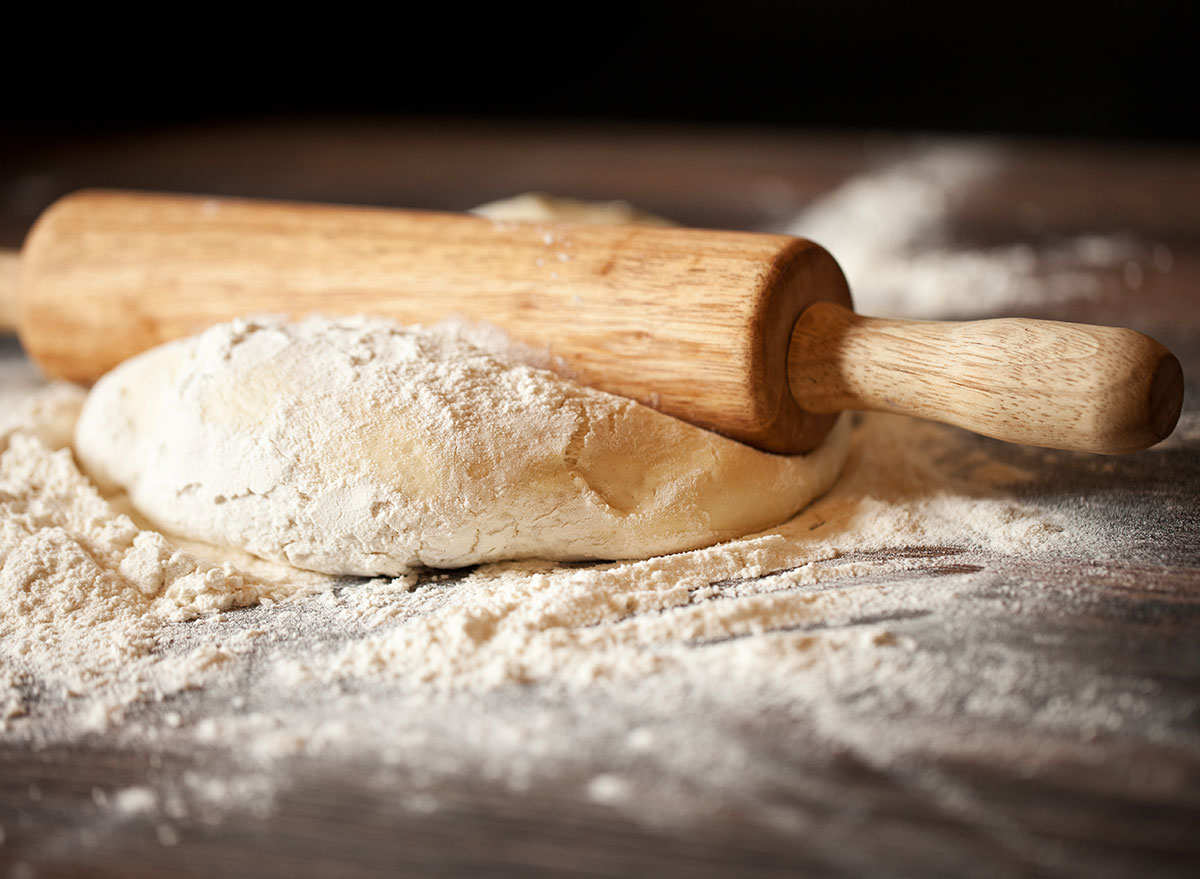
The long fermentation process breaks down the bread’s gluten, allowing our bodies to properly digest it. It might even be possible for those who are gluten intolerant to follow this diet.
Less bloating.
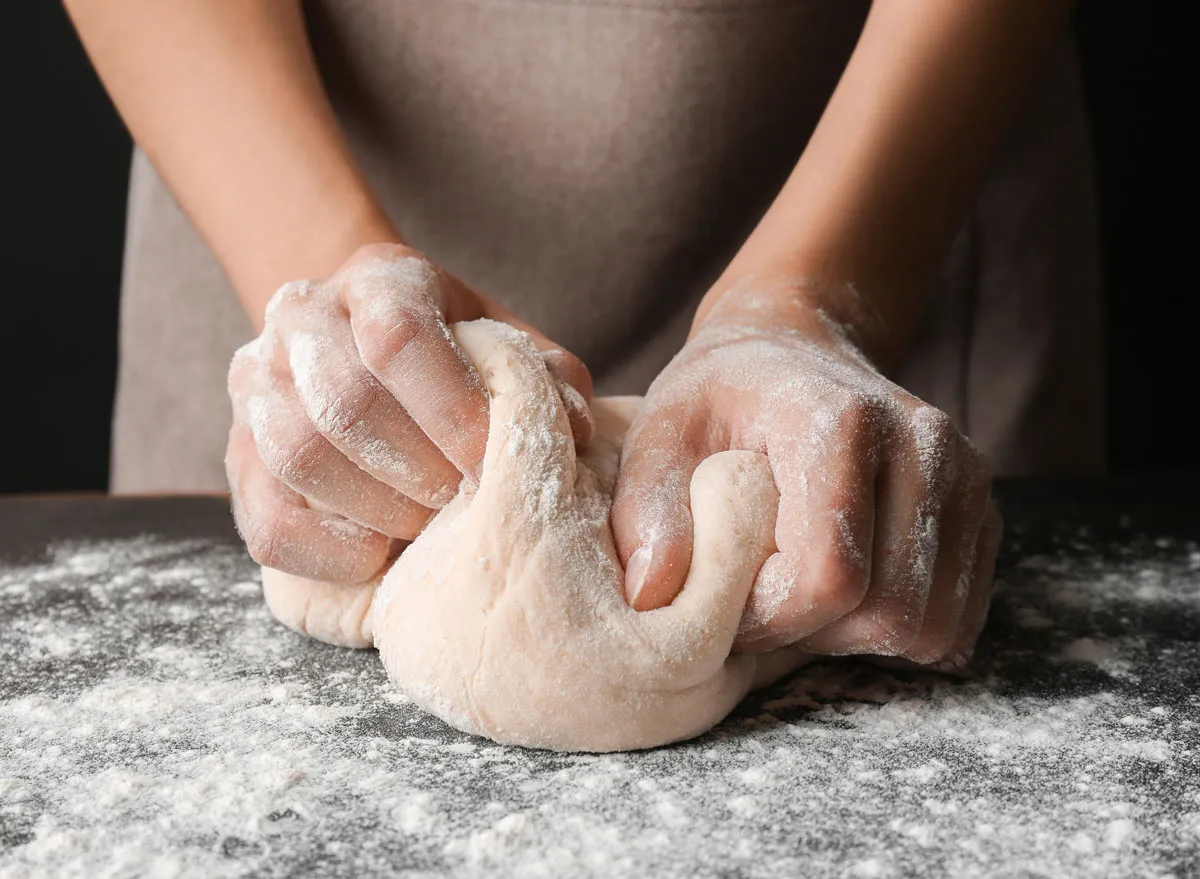
That distended belly and uncomfortable feeling you get after eating some pizza may not be all in your head. Research suggests that when bread doesn’t get fermented before you eat it, your body is forced to break it down in your belly, producing gas and bloating.
Lower glycemic index.
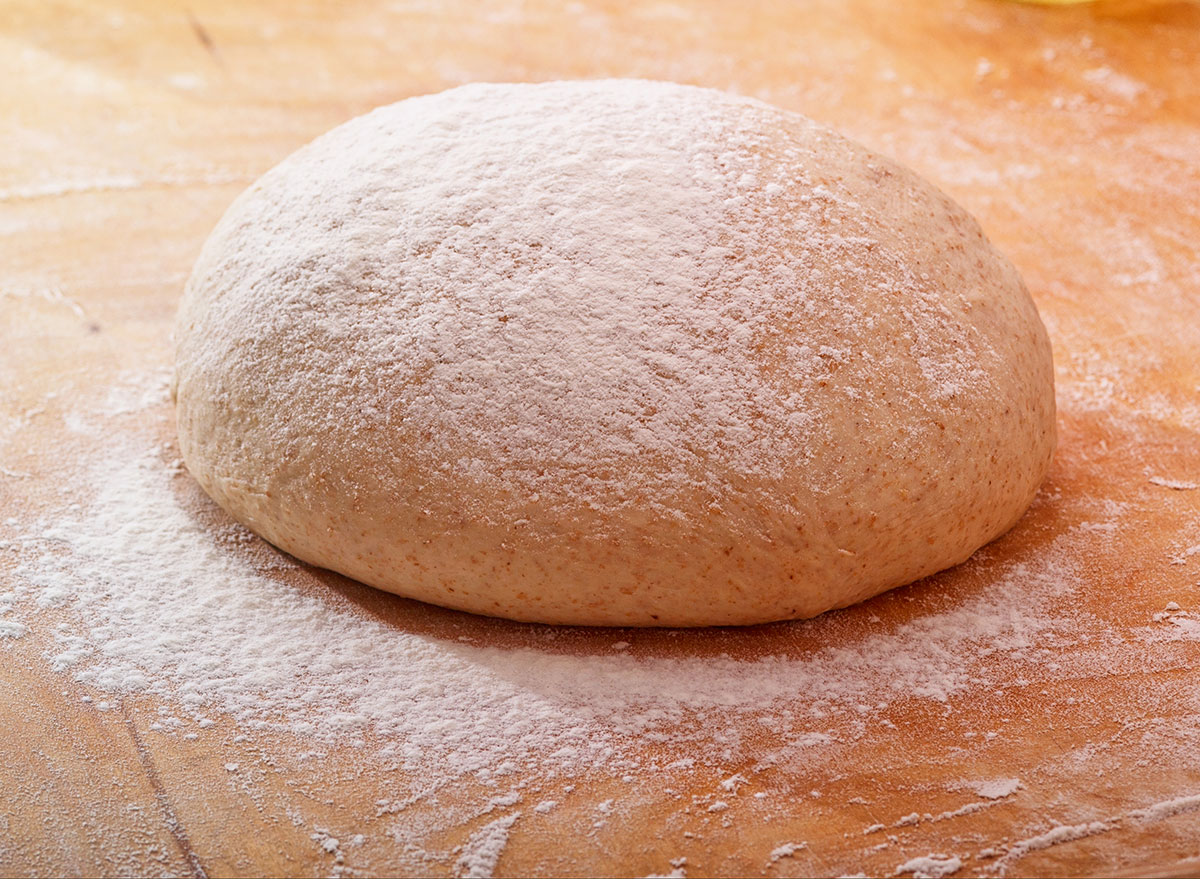
The particles in stone-ground flour are larger than those in flour made by the traditional industrial method. It’s harder to digest, which is actually a good thing, as it’s slower to absorb into our bloodstream and leads to a smaller spike in blood sugar.
And now, the recipe for pizza dough.
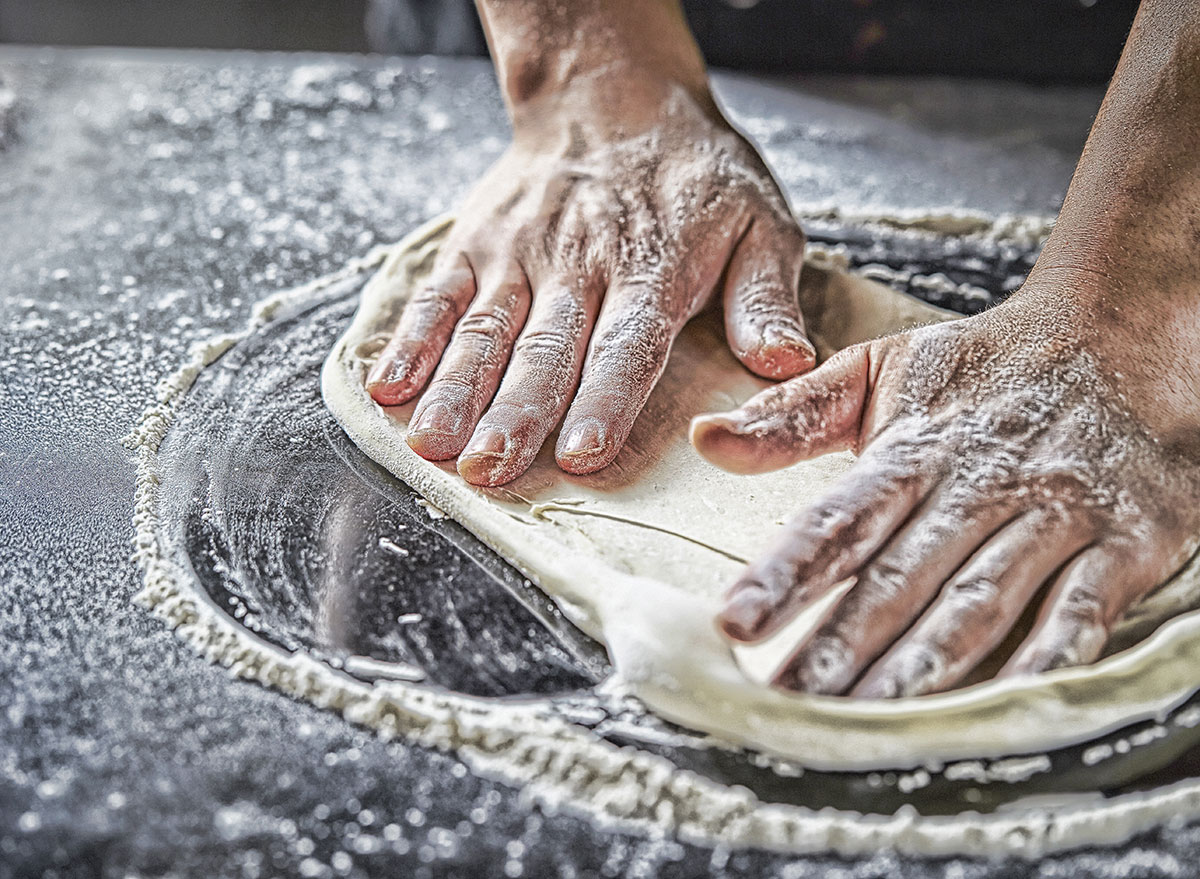
Making dough right takes time. You don’t want to have to do it daily. So the following recipe is designed to make enough for at least a week’s worth. Keep the dough refrigerated until ready to use. Or double the recipes and freeze half for another week.
Makes eleven 12-inch pizzas
Ingredients
35 oz cold water
1 tsp dry yeast
3.65 lb Italian stone-ground flour
3 Tbsp sea salt
How To Make It
- Pour the water into a large mixing bowl and add the yeast. Mix with your hands, breaking up the clumps of yeast. Let stand for 5 minutes until all the yeast has dissolved.
- Add 20% of the flour (about 1⁄2 cup) and mix with your hands until a creamy slurry forms.
- Add the salt and the remaining flour and mix by hand (or use a stand mixer) until a soft, elastic dough has formed.
- Transfer to a floured work surface and knead and fold with your hands for 5 minutes. If the dough is too wet, add a bit more flour.
- Cover with plastic wrap and allow the dough to rest at room temperature for 20 minutes.
- Cut the dough into balls of about 8 ounces each. Seal in an air-tight container and let rest for 4 or 5 hours at room temperature.
- Move into the refrigerator and let rise for another 20 hours. You can let it rise for longer, but no more than 48 hours, as it will begin to sour. Dough can be frozen for up to 6 months.
Looking for more tips on exactly how you can eat pizza and still lose weight? The Pizza Diet has it all.
